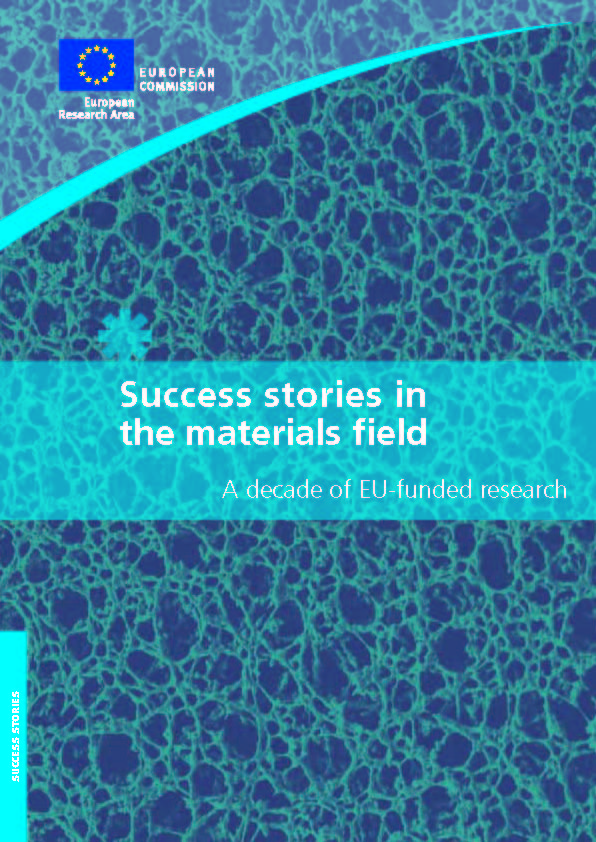ODEONdesign and fabrication of Optoelectronic DEvices based
on innovative second-order non linear Organic Nanomaterials
 Organics bring prospect of faster electro-optics (2004-2007)NMP3-CT-2003-505478 - ODEON
Organics bring prospect of faster electro-optics (2004-2007)NMP3-CT-2003-505478 - ODEON
in EUR 23581 EN - Success stories in the materials field - A decade of EU-funded research
ISBN 978-92-79-09669-3 DOI 10.2777/96506
Electro-optic modulators are key devices in telecommunication
and information systems; they encode data into an
optical signal for high speed transmission over fibre-optic
cables. The properties of such modulators are based on
second-order non-linearity of materials such as lithium
niobate, which are characterised by the lack of a centre of
symmetry.The ODEON project was launched to break the deadlock arising from intrinsic limitations in modulation frequency of the existing materials, indicating that established techno logy had reached a performance plateau. The need for new and faster devices was evident, and it was believed that new materials would be able to provide alternative solutions.
A 'soft matter' approach opened new perspectives for innovative device fabrication based on organic molecules (chromophores) with high second-order non-linear optical activity. Such molecules can be dispersed in, or covalently bonded with, polymeric or glassy hybrid organic/inorganic sol-gel derived matrices. In order to be active as electrooptical devices, the chromophores must be oriented by a poling process to give an overall non-centrosymmetric system.
ODEON gathered the best European skills operating in the fields of functional polymers, sol-gel based materials, chromophore synthesis and device fabrication. Its specific objectives were to:
# improve the performance of second order non-linear chromophores, develop new families of molecules and model their non-linear properties;
# test chromophore compatibility with polymers and hybrid sol-gel based materials as a means to optimise loading stability;
# reach a higher degree of polar order in the functional materials;
# develop procedures to test the time-stability of the systems, in order to identify the optimal materials; # determine the design and fabrication processes for a test device.
Project successes
Many new systems identified.
Synthesis and characterisation of more than 60 new systems - chromophores, polymers, functionalised polymers and sol-gel based matrices containing active species - produced highly promising results in terms of application suitability.Process guidelines set.
Modelling of the poling process - including the composition of the guest chromophore,the host polymer and the effect of electric field - showed how to optimise the capability of the composite system for electro-optical switching.Material/process compatibility.
Two systems were selected for subsequent device test. The first is a very stable cross-linkable polymer based on bisdiazo-phenyl chromophore; the second is an optimised hybrid sol-gel material containing a suitable functionalised chromophore that is chemically bondable to the matrix backbone.Production strategies defined.
Two different lithographic strategies were envisaged for the two above systems. Other direct photolithography routes to high quality guiding structures were also developed.Mach-Zehnder electro-optical modulators based on organic active molecules in polymeric and hybrid sol gel materials were studied and developed. A demonstrator was fabricated using a standard photolithographic approach (waveguides and electrodes). Alternative fabrication methods were also analysed with a view to cost-effective device manufacturing.
